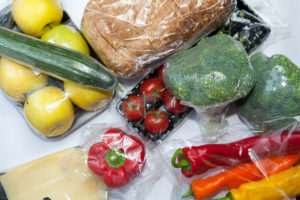Opinion: Canada’s mounting plastic problem needs a co-ordinated government fix
Why are we in this plastic-waste mess? In a word, economics. In this opinion article, Usman Valiente explains why Canada’s mounting plastic problem needs a co-ordinated government fix.
Full Article
By: Usman Valiente, contributed to the Globe and Mail
Usman Valiante is a senior policy analyst with Cardwell Grove Inc. He is the author of the Smart Prosperity Institute’s A Vision for a Circular Economy for Plastics in Canada: The Benefits of Plastics Without the Waste and How We Get it Right
Last week Environment and Climate Change Canada released a study showing that of the 3.3 million tonnes of waste plastic generated annually by the Canadian economy, only 9 per cent is recycled, 1 per cent is lost to the environment as litter and the bulk is sent to landfills and incinerators.
In May, Malaysia and the Philippines said they would ship back Canadian exports of mostly contaminated mixed plastic waste. In January of 2018, Asian recycling markets that had historically taken low-quality mixed plastics closed, sending many Canadian municipalities and their recycling contractors reeling. Whales engorged with ocean-borne plastics continue to wash up dead on the world’s shorelines, leaving Canadians to wonder how much of the plastic they sent elsewhere for recycling ended up in the ocean.
So why are we in this plastic-waste mess? In a word, economics.
Collecting and recycling the plastic in packaging, electronics, textiles, automobiles and construction waste is far more costly than making more from natural gas and disposing of it when we are done.
Plastic production is done at large scale, and each stage of the plastics life cycle is effectively subsidized: Methane emissions from natural gas wells are unmitigated and unpriced; the federal and provincial governments directly subsidize plastic production facilities; greenhouse gas emissions associated with burning fossil fuels to power plastic production are unmitigated and unpriced; and disposal of plastics to landfill, incinerators and the environment is virtually free.
Making one tonne of polyethylene and then burning it after use generates almost five tonnes of greenhouse gases. About 4 per cent of the oil and gas produced globally is used for plastics, and less demand due to electrification of transportation is expected to be replaced by more demand for plastics. How we make, use and waste plastic is a critical climate change challenge.
The immediate problem of redirecting plastics from disposal to recycling requires two complementary policies.
The first is extended producer responsibility (EPR). This requires businesses that produce or import plastic products or use plastic packaging (“producers”) to have their plastics collected and recycled into feedstock suitable for manufacturing.
Responding to EPR requirements, producers would create reverse supply chains for collecting plastics from consumers and directing those plastics to recycling.
As an example, British Columbia’s EPR-based beverage container deposit program and its first-of-a-kind residential printed paper and packaging recycling program have driven the creation of provincial reverse supply chains including dedicated in-province processing of plastics.
The second key policy is to set low-carbon standards for plastics. These standards have proven effective for fuels, driving demand for lower carbon alternatives such as ethanol and biodiesel, and they could work for plastics.



